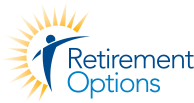
Late in your career, typically during your 50s and 60s, your thoughts and actions turn to retirement—leaving the 9 to 5 workforce—either of your own choosing or other circumstances. Some share their thoughts, feelings, and plans with others. Many keep these personal questions to themselves, uncertain where to go or with whom to speak.
MIT-based author and researcher Peter Senge said, “People don’t resist change; they resist being changed.”
If you’re an introverted thinker, then strategy and vision probably come naturally to you; for you, transition and planning fit hand in glove. Maybe you see the world differently, however, finding your way forward using your feelings as a guide. If you think back along your career for the past 30 or 40 years, can you reflect on the planning that enabled you to move from point A to point B? You may have had a strategy, formal or not. You probably recall how you got where you wanted, i.e., the tactics used. But the big picture strategy may be fuzzy all these years later.
When you are five to ten years from your desired retirement date, personal strategy and vision are the classic starting points. This period then becomes a time for purposeful reflection. It is also when you tend to take stock of your accomplishments, relationships and other values that matter to you. You tend to measure your level of life satisfaction, either formally or otherwise. You may take score, take a measurement or some other method of answering life’s biggest questions. The most important outcome is that you find the answers to your “what if” questions. This will then inform your deliberate choices regarding how and when to move forward from your 9 to 5 world to your retirement destination.
One such method, the SMART Start approach, uses five stages to help you answer your “what if” questions. It will help you understand and answer the emotional aspects of how you’re affected by this significant change. It can be explored individually, with a spouse, or as a couple. As you travel this journey, SMART Start will help you realize that retirement coaching enables your conscious decisions. It empowers well-informed choices along your life journey from Career2Retirement.
The SMART Start approach introduces five stages which begin with starting from where you are:
1) START
2) MINDSET
3) AWARENESS
4) RENEWAL
5) TRANSFORMATION
START from Where You Are
Through reflection, introspection, and gentle self-examination, you can move ahead understanding your innate personality (emotional patterns and behaviors,) needs and wants, your why (motivation), fears and concerns. The journey will be revealed through actionable exercises, stories and metaphors. Through this, you can find yourself along this path—where you are now (at the start) and what’s missing in your retirement. The first and most important step to build your future self requires you to start.
A Shifting MINDSET
How are you approaching retirement? If your job is eliminated, can you view it as a blank slate? Your retirement transition can influence and transform your life over the next 30 to 40 years. Some may not want to retire as previous generations but work in another way. You may elect to work part time or develop a hobby or passion for income. Together, we’ll leverage what you learned, face the tension and challenges of today, and discover the future you. Moving ahead with what’s known as “retirement” should include readiness and sustainment conversations.
Of course, financial planning is important. Getting the math right is critical. Today, we know financial planning is not the only perspective of retirement planning. Non-financial retirement coaches align your emotions, values, and authentic-self. Most of us agree that as we grow older, we grow wiser. Wisdom often reflects appreciation of knowledge, experience, and a deep understanding of the uncertainties of life. Wisdom includes exploring the “what-if” questions that inform your deliberate retirement choices.
AWARENESS
Self-awareness is your understanding of what’s happening emotionally, cognitively, psychologically, and behaviorally. By exploring these, you’re better able to make conscious and well-informed choices. According to Larry Dressler, author of Standing in the Fire:
The purpose of self-awareness is not to repress our emotions when we get triggered. Through self-awareness, we recognize our limiting internal narratives and feelings as normal but not always useful parts of ourselves, and in that moment and recognition, we can create space for choice to occur.
Retirement coaching provides space to determine your clarity and direction. You may be financially ready, but emotionally unprepared. Working through your “what-if” questions tends to identify those emotions. That’s where the trusting relationship between your coach and yourself makes the difference. Trust in that relationship lets you feel secure and capable of changing, overcoming defensiveness and other learning anxieties. You feel free to focus on collective goals and problem-solving rather than self-protection. You feel okay to be yourself; you won’t feel humiliated or judged.
Awareness can be expanded using various tools. A few are below:
Retirement Success Profile™
The Retirement Success Profile™ identifies personal strengths and areas of focus across 15 success factors that closely affect retirement transition and planning. This tool measures where you are in your retirement transition preparation and which areas require the most attention in planning for a fulfilling future.
LifeOptions Profile™
The LifeOptions Profile™ assesses retirement readiness across 20 lifestyle and attitudinal dimensions in six life arenas: Career and Work, Health and Wellness, Finance and Insurance, Family and Relationships, Leisure and Social, and Personal Development. This tool provides a self-portrait of your lifestyle needs and insights on transitioning to your new retirement lifestyle.
A widely accepted personality assessment is VIA Character Strengths. To further expand your self-awareness, it helps you find the right balance of your strength expression in the right context so not to overplay or underplay key strengths. A few dozen page detailed report includes graphs and exercises to be explored.
Resilience and RENEWAL
Resilience at midlife, bouncing back from adversity, is among the most significant skills we can develop. Along life’s journey, you are faced with many stresses. Unexpectedly, adult children move back home. Caring for ill parents, career setbacks, and other adversities will occur. At this stage of life, you have developed coping skills and learned from situations in the journey from Career2Retirement. Understanding which skills worked previously is among one of your greatest traits in midlife. Learning to adapt new skills is a natural part of your growth and development, both before and during retirement. Building mental muscles, including optimism and reframing as a new way to look at something (perspective), are strong skills for later years.
Approaching retirement, you’ve already learned to create and sustain momentum for what’s important. Whether you’re aware or not, those skills have enabled you to reinvent yourself throughout your working life. Reinvention is the outgrowth of mindset and awareness you’ve acquired along your Career2Retirement journey. You have received new information and awareness and made choices aligned with your values. As you have leveraged knowledge, skills and mindset, you have created space for reflection, introspection, and self-examination.
TRANSFORMATION
Change is temporary. Change is hard. Change is an event that often happens to you. Transformation is the gradual psychological reorientation process that happens inside you as you respond and adapt to external change. Transformation is the result, the new you—your new retirement. Transformation incorporates the thinking and actions for your future. It reflects who you want to become.
The most common question people are asked when they share their intent to retire is, “What are you going to do?” I respond, “It’s not what I’m going to do; it’s who I am going to be.” The SMART Start approach serves as a roadmap and guidance for your journey to a new retirement destination.
“If you don’t know where you are going, any road will get you there.”


